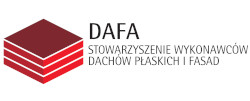Open Access (Artykuł w pliku PDF)
State of knowledge on the use of copper slag in cement composites
mgr inż. Martyna Nieświec, Politechnika Wrocławska, Wydział Budownictwa Lądowego i Wodnego
Adres do korespondencji: Ten adres pocztowy jest chroniony przed spamowaniem. Aby go zobaczyć, konieczne jest włączenie w przeglądarce obsługi JavaScript.
DOI: 10.15199/33.2023.05.07
Artykuł przeglądowy
Streszczenie. Artykuł dotyczy wykorzystania żużla pomiedziowego w kompozytach cementowych, który jest produktem ubocznym wytopu miedzi. Pomimo rosnącego zainteresowania tym tematem, nadal brakuje odpowiednich badań właściwości świeżej zaprawy i mieszanek z wykorzystaniem kruszyw pomiedziowych, głównie zawartości powietrza i gęstości. Wśród badań stwardniałego betonu i zapraw brakuje rzetelnych informacji o wpływie kruszywa pomiedziowego na nasiąkliwość, mrozoodporność, skurcz oraz mikrostrukturę. Dodatkowo większość prac bazuje na zastąpieniu cementu lub kruszywa drobnego, pomijając zastąpienie kruszywa grubego. W artykule podkreślono ograniczenia i możliwości oraz określono luki badawcze. Skupienie się na nich może mieć kluczowe znaczenie w przypadku dalszych badań w Polsce, która jest w czołówce państw o największych zasobach miedzi.
Słowa kluczowe: żużel pomiedziowy; mieszanka betonowa; beton; zaprawa cementowa.
Abstract. The article is about the use of copper slag, which is a by-product of copper smelting, in cement composites. Despite the fact that the interest in this direction of research is growing, there is still a lack of adequate research on the properties of the fresh mortar and concrete mixes with the use of copper slag aggregates, mainly on the air content and density. Among the tests of hardened concrete and mortars, there is no reliable information about the influence of copper aggregate on their water absorption, frost resistance, shrinkage and microstructure. In addition, most of the works focus on the replacement of cement or fine aggregate, omitting the replacement of coarse aggregate. This paper highlighted limitations and opportunities and identified some research gaps. Focusing on them might be of key importance for further research activity in Poland, as it is among the countries with the largest copper resources.
Keywords: copper slag; concrete mix; concrete; cement mortar.
Literatura
[1] Duszyński A, Jasiński W, Pryga-Szulc A. Ocena i wykorzystanie kruszywa z pomiedziowego żużla granulowanego do mieszanek gruntowo- -kruszywowych. Biuletyn Państwowego Instytutu Geologicznego. 2017.
[2] Sankh AC, et al. Recent trends in replacement of natural sand with different alternatives. Proceedings of the International Conference onAdvances in Engineering and Technology. 2014.
[3] Gorai B, Jana RK. Characteristics and utilisation of copper slag – a review. Resources, conservation and recycling. 2003; 39.4: 299 – 313.
[4] Magdalinović S, et al. The effect of smelting and granulation on some properties of smelter slag. Mining and Metallurgy Engineering Bor. 2018; 1-2: 69 – 78.
[5] Ayano T, Sakata K. Durability of concrete with copper slag fine aggregate. 5th International CanMET/ACI Conference on Durability of Concrete 2000. American Concrete Institute, 2000.
[6] https://www.pgi.gov.pl/psg-1/psg-2/informacja- i-szkolenia/wiadomosci-surowcowe/9795- miedz-i-srebro. html, dostęp 27.11.2022.
[7] Al-Jabri, Khalifa S, Abdullah H. Al-Saidy, Ramzi T. Effect of copper slag as a fine aggregate on the properties of cement mortars and concrete. Construction and Building Materials. 2011; 25.2: 933 – 938.
[8] Singh Thongam Prantic, Rajashekhara MR, Suhas R. Utilization of copper slag as fine aggregates in cement concrete pavements. Int. J. Res. Eng. Tech 2.7. 2014: 358 – 365.
[9] Arivalagan S. Experimental study on the flexural behavior of reinforced concrete beams as replacement of copper slag as fine aggregate. Journal of Civil Engineering and Urbanism. 2013; 3.4: 176 – 182.
[10] HwangCh-L, LaiwJ-Ch. Properties of concrete using copper slag as a substitute for fine aggregate. Special Publication; 1989; 114: 1677 – 1696.
[11] Korentz J, Jurczak R, Szmatuła F. Właściwości betonu z dodatkiem kruszywa z żużla pomiedziowego. Properties of concrete with the addition of copper slag aggregate.
[12] Toshiki A, Kuramoto O, Sakata K. Concrete with copper slag fine aggregate. 2000: 1097 – 1102.
[13] Zain MFM, et al. Cement-based solidification for the safe disposal of blasted copper slag. Cement and Concrete Composites. 2004: 26.7: 845 – 851.
[14] Moura WA, Gonçalves JP, Lima MBL. Copper slag waste as a supplementary cementing material to concrete. Journal of Materials Science. 2007; 42.7: 2226 – 2230.
[15] Tixier R, Devaguptapu R, Mobasher B. The effect of copper slag on the hydration andmechanical properties of cementitiousmixtures.Cement and Concrete Research. 1997; 27.10: 1569 – 1580.
[16] Al-Jabri K, Taha R, Al-Ghassani M. Use of copper slag and cement by-pass dust as cementitious materials. Cement, Concrete and Aggregates. 2002; 24.1: 7 – 12.
Przyjęto do druku: 10.01.2023 r.
Materiały Budowlane 05/2023, strona 26-29 (spis treści >>)






























